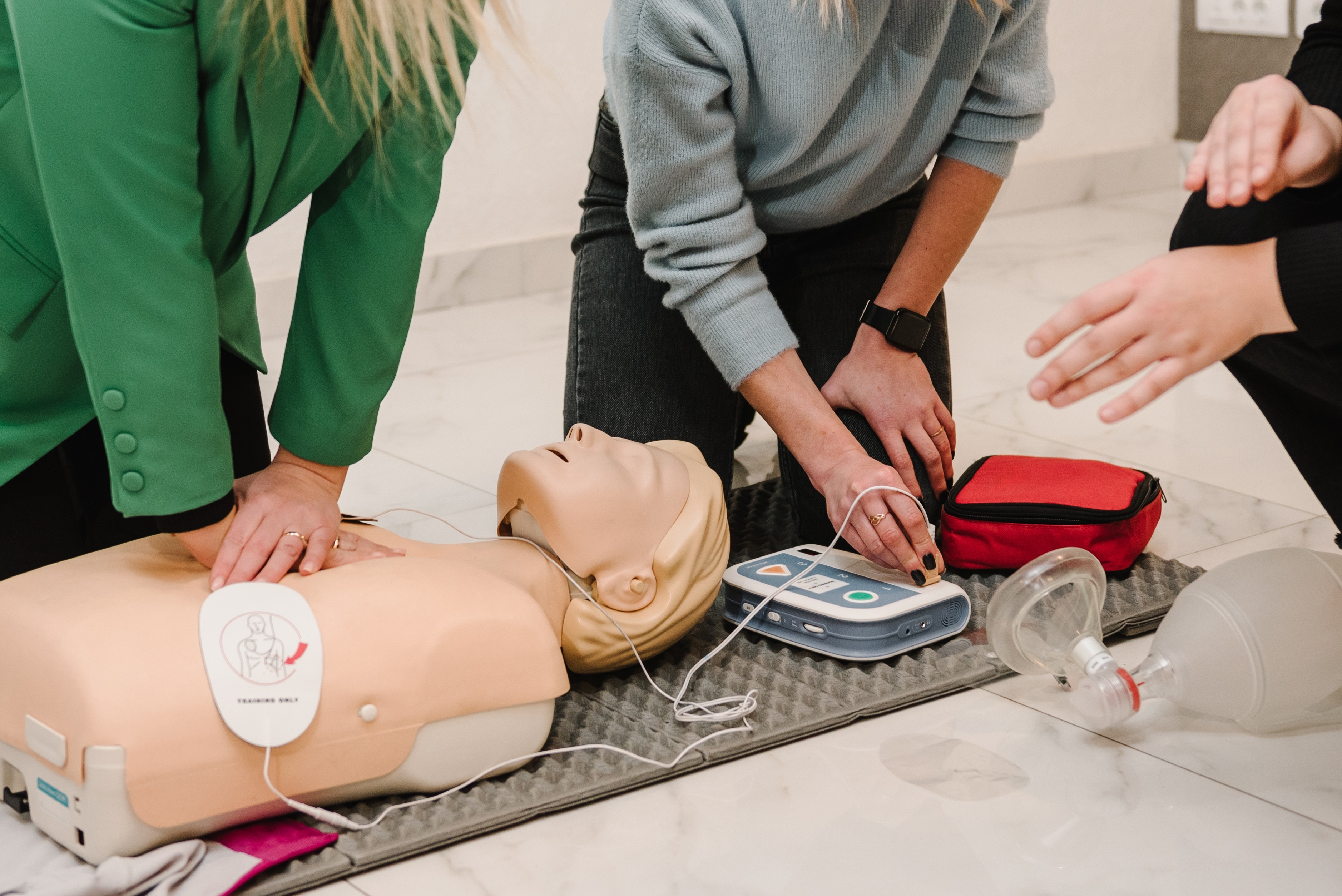
What to look for
When a medical emergency occurs, it puts a huge amount of pressure on the person who is going
to administer the defibrillator regardless of whether they’ve had training. You can choose whether
the technology you invest in gives the critical shock automatically, known as fully automatic, or
whether someone is required to push a button to do so, which is called semi-automatic.
Key features available
With so many different brands available, here’s a comparison of some of the most well-known
features and which products offer them:
Feature | Details |
AED pads (adult) | Electrode pads that are placed on the bare chest and can monitor the heart
rhythm to determine if a shock is required – if needed, the shock will be delivered
to the body through these pads
|
AED pads (paediatric) | Electrode pads designed for specific use on children under the age of
approximately eight
|
Voice instructions and visual icons | Verbal and visual prompts to guide the user through the steps involved in
using the AED
|
Carry case | A product-specific carry case designed to protect the device
|
Data capture and reporting | The ability to record data whilst the device in on, including capturing
heart-rate information before and after a shock is given
|
Geolocation | Tracker allowing easy location of the defib in an emergency. They also
allow real-time monitoring of multiple devices at a central source to make sure
they’re ready to use and accessible.
|
Location and convenience
While defibrillators are portable, where you decide to put your device and how you store it
are important for many reasons. In most workplace environments, the obvious choice is to keep the device
inside the premises. For companies located in community hubs, it may be an option to store the device
externally on the wall of an easily accessible and visible building. Regardless of location, it’s
important to make sure your workforce know where the defibrillator is located and that it’s stored
safely and securely so that it doesn’t get tampered with or mis-used.
Cost considerations and specialist settings
A standard defibrillator will typically cost from £800 to around £2,500 as an initial
investment, however you can expect this to last 10-15 years depending on how it is used. Many
devices come with a warranty of at least 7 years once the device is registered, however further regular
maintenance will be needed. Even if the device isn’t used, a typical battery will last between 4-6
years which can cost upwards of £200 to replace depending on the brand, and pads have a typical shelf
life of 2-years before needing replacing, which can be around £70-£100 minimum to replace.
Helping you to save a life
If you want to demonstrate your commitment to the
health and safety of your workforce and give those around you peace of mind that you are as prepared
as possible for a life-changing cardiac event, you can take a look at our range of cost-effective
defibrillators here or talk to our team of experts about your requirements by
calling 0845 230 2090. As well as
providing the information you need to help make a purchasing decision, we can also share details of
available training to increase the user confidence and make sure there’s no hesitation in acting
fast to deliver life-saving treatment